Trying to implement Leaflet.timeline and running into a problem with either the structure of the GeoJSON or something else.
To simplify debugging I've added the geojson as a var (in reality it's dynamically created by Rails). Here's the beginning:
var data = [{"type":"FeatureCollection","features":[{"type":"Feature","properties":{"start":"1903","end":"1908","name":"part of S. Toluca St. (26). and second block south gone","title":"Was Brook before 1903 and now is part of S. Toluca St. (26). and second block south gone 1908.","link=":91},"geometry":{"type":"LineString","coordinates":[[-118.25862396508458,34.06087254304104],[-118.25933206826451,34.05994816216629]]}},{"type":"Feature","properties":{"start":"1903","end":"1928","name":"part of E. 40th Place","title":"Was 37th St before 1903 and now is part of E. 40th Place 1928.","link=":650},"geometry":{"type":"LineString","coordinates":[[-118.25712423772116,34.01007010760971],[-118.25649456380442,34.01016443793837],[-118.25584971702219,34.01016443793837],[-118.25427932544667,34.0102021700405],[-118.25213995141625,34.010227324765935]]}},{"type":"Feature","properties":{"start":"1903","end":"1908","name":"part of E. 9th Place (21).","title":"Was 10th St. before 1903 and now is part of E. 9th Place (21). 1908.","link=":3},"geometry":{"type":"LineString","coordinates":[[-118.24982816353442,34.035546195508864],[-118.25104052200915,34.03663976724366]]}},{"type":"Feature","properties":{"start":"1921","end":"","name":"Miramar St. One block abandoned","title":"Was 3rd St before 1921 and now is Miramar St. One block abandoned .","link=":645},"geometry":{"type":"LineString","coordinates":[[-118.26117539280003,34.05901974362122],[-118.2593849946753,34.05823410691563],[-118.25815599257271,34.05768101430694],[-118.25759459655055,34.05717191451128],[-118.25663111959356,34.05654339202722]]}},{"type":"Feature","properties":{"start":"1928","end":"1930","name":"Commonwealth Pl and a portion abandoned","title":"Was Auto Pl before 1928 and now is Commonwealth Pl and a portion abandoned 1930.","link=":50},"geometry":{"type":"LineString","coordinates":[[-118.28558737412096,34.07543021182353],...
I get to here in the Leaflet.timeline:
_process(data) {
data.features.forEach((feature) => {
Looking at data:
In other words, it seems to be intact and understood. If run from here it fails with Uncaught TypeError: Cannot read property 'forEach' of undefined, so reload again and stop; and in the console data[0].features
and lastly data[0].features.forEach(feature) in the console:
What am I doing wrong or what else should I check? The geojson works with var segmentLayer = L.mapbox.featureLayer().loadURL('overview_data.geojson').addTo(laMap); but I would like to add a time slider.
Not direct answer, but I solved my bigger problem of reading a GeoJSON. As I said in Reading a GeoJSON file into Rails/Leaflet, I read the GeoJSON in with
$.getJSON("overview/overview_data.json", function (data) {
<all the stuff I needed to to>
} )
Although it looks the same I must have restructured the GeoJSON a bit, because the problem mentioned here is gone.


![result of data[0].features.forEach(feature)](../../images/3796634699.webp)